Every animal featured in Flow 2024
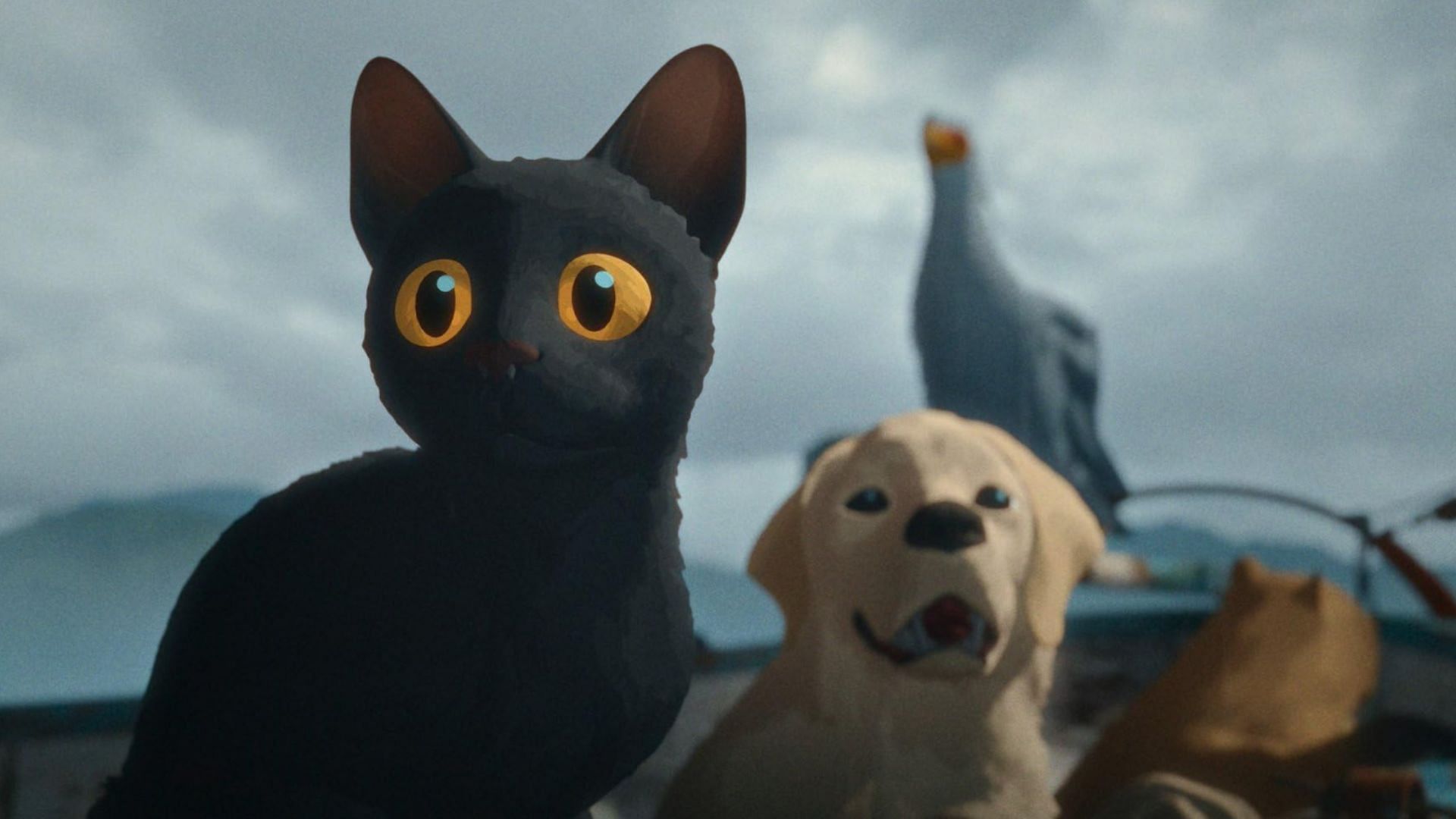
Flow is a 2024 animated adventure film directed by Gints Zilbalodis. This film features a diverse cast of animal characters at the heart of a story about survival, friendship, and exploration.
Premiering at the Cannes Film Festival in the Un Certain Regard section, Flow quickly gained critical acclaim. Its animation and storytelling helped it to become among the most discussed movies of the year.
Produced using the open-source Blender software, the film's animation transports viewers into an emotionally charged trip devoid of spoken dialogue by depending just on natural animal sounds.
The movie introduces a variety of endearing and important characters, including dogs, capybaras, a ring-tailed lemur, a mysterious secretarybird, and a bigger, scarier version of a whale.
The story primarily follows a dark gray cat and other animals as they navigate a post-apocalyptic world where rising floodwaters have covered everything. Initially terrified and suspicious, the cat has to overcome its worries and establish rapport with other animals.
As they learn lessons about trust, bravery, and teamwork, their common search for survival finally brings them to face an even greater danger: a mutant whale. Driving the cat's change, the floodwaters represent both physical and emotional obstacles.
From Bombay Cat to Whale: Animals featured in Flow
Bombay Cat
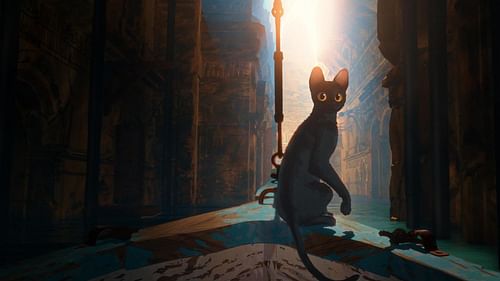
The Bombay cat, a dark grey feline, serves as the movie's protagonist. Its journey begins with fear and distrust, especially towards other animals, but as the plot progresses, it learns to trust and build relationships.
The cat's subdued meows and purrs capture a broad spectrum of emotions, helping viewers relate even without conversation. As it navigates the dangers of rising seas, predators, and new surroundings, this cat stands for resiliency.
Secretarybird
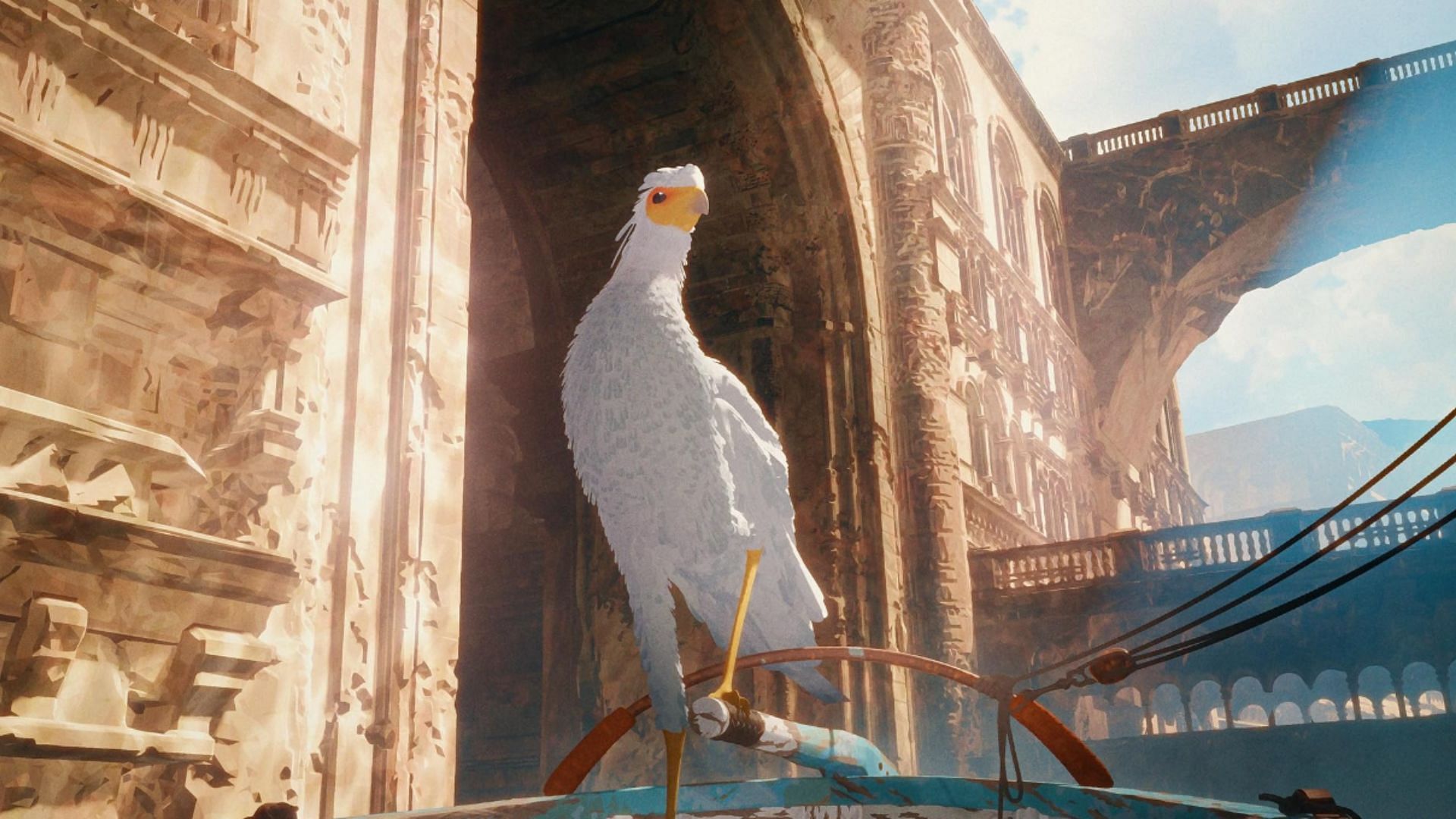
The secretarybird is a mysterious character, initially presented as a threat to the cat. With its long legs and aggressive demeanor, it is first shown attacking the cat.
However, as the narrative unfolds, one secretarybird befriends the cat and starts to be a regular crew. The whole theme of the movie, growth, understanding, and the value of unusual friendships, mirrors the path of atonement and metamorphosis of this bird.
Ring-Tailed Lemur
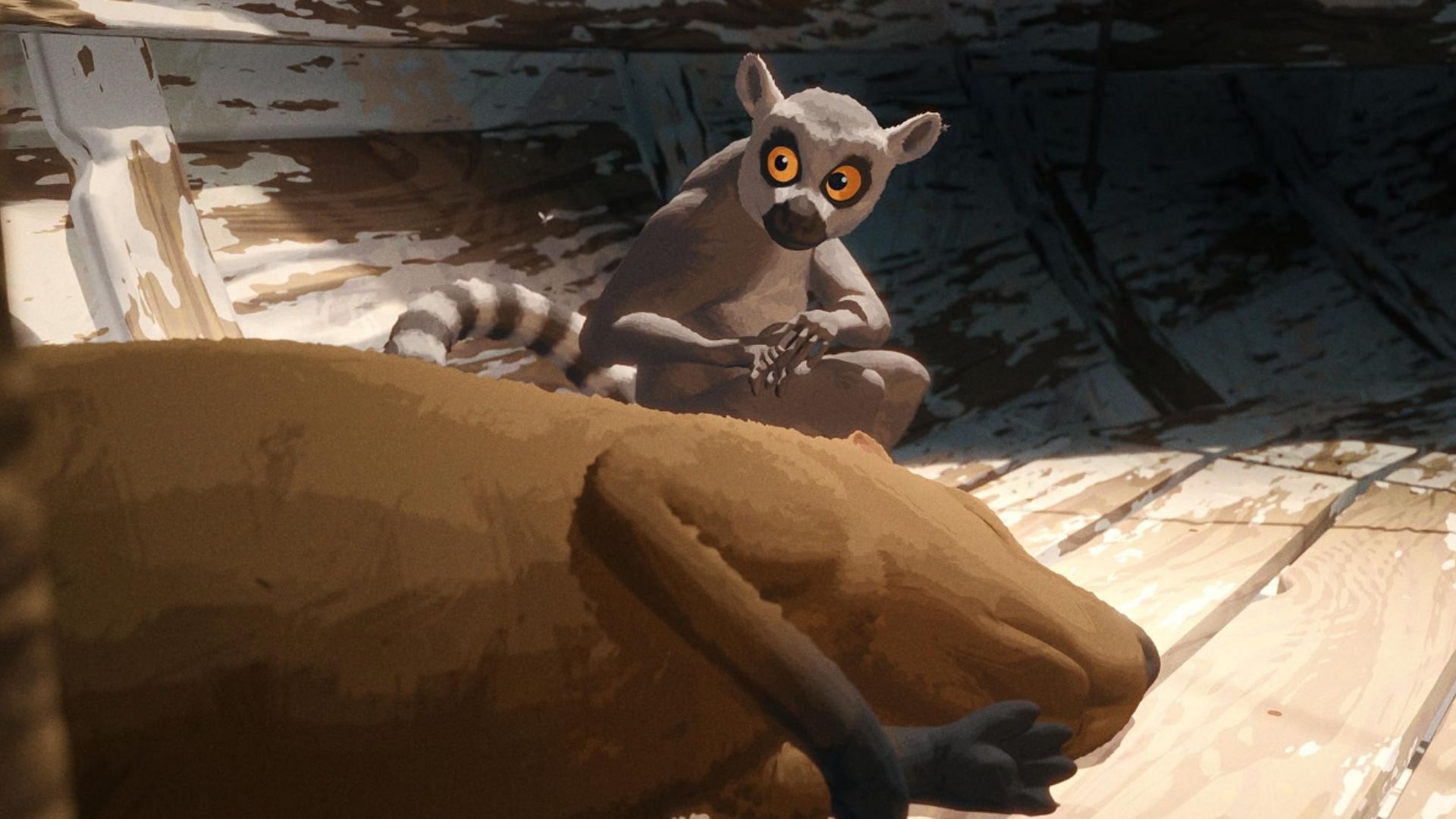
The ring-tailed lemur provides comic relief in Flow. It is portrayed as materialistic, always guarding its precious trinkets. The lemur’s antics lighten the mood during darker moments, and its fascination with its reflection in a hand mirror highlights its curious nature.
Though humorous, the lemur also learns valuable lessons about loyalty and selflessness as it joins the crew on their perilous journey.
Capybara
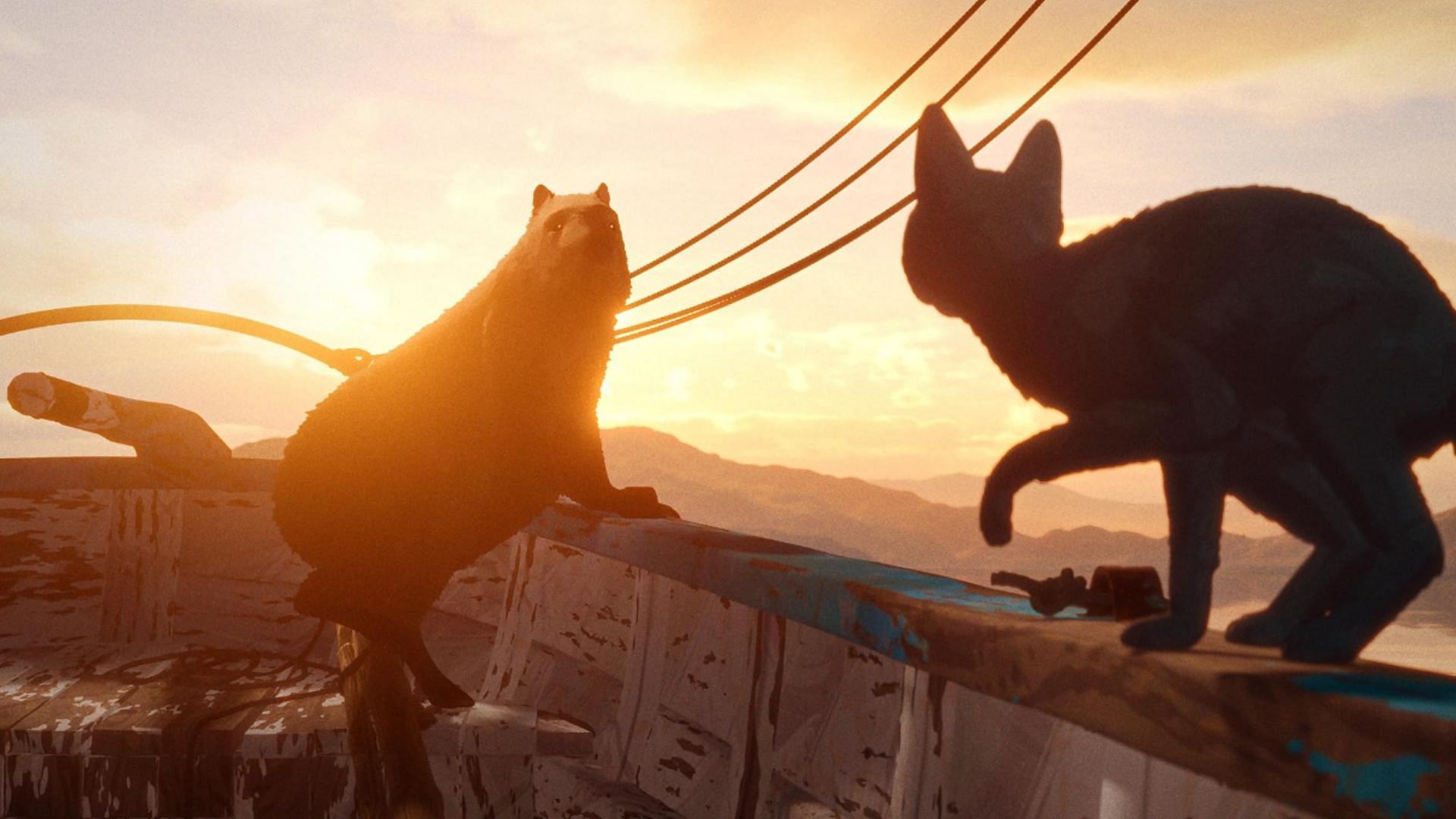
The capybara is a calm and collected figure, serving as the captain of the boat that carries the group of survivors. As a rodent from South America, it demonstrates leadership traits and remains composed under duress.
The capybara's calm disposition stabilizes the animal crew, and its ability to remain composed under pressure is crucial to sustaining the group during their most trying times.
Dogs
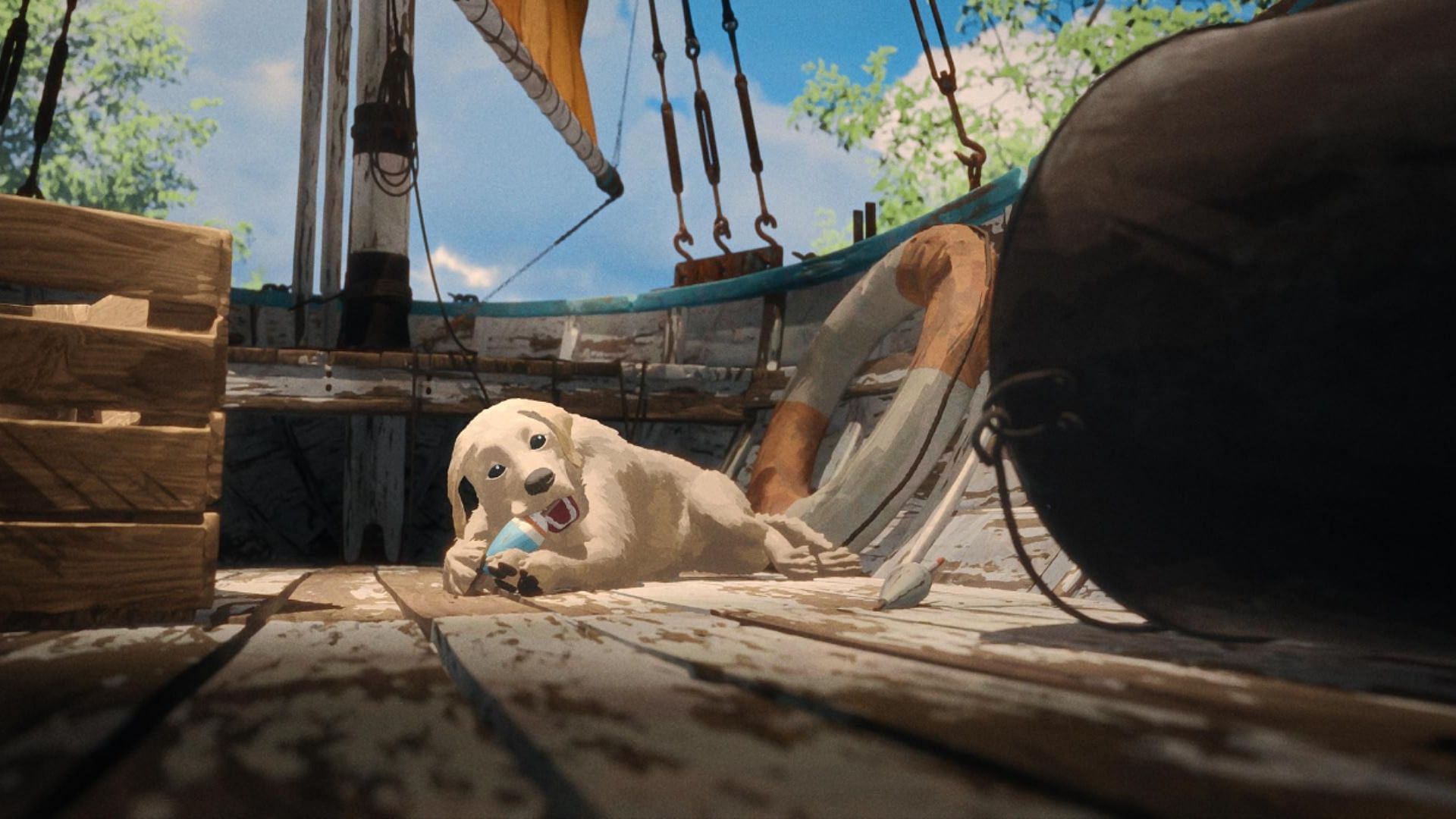
Several dog breeds appear throughout the movie, with a particular focus on a golden Labrador Retriever. Initially, the dogs threaten the cat, but the Labrador shows to be a devoted friend.
Following a first estrangement, the Labrador makes a reappearance among the cat's most reliable friends. Emphasizing themes of loyalty, friendship, and sacrifice, other dog breeds also travel alongside the group.
Deer
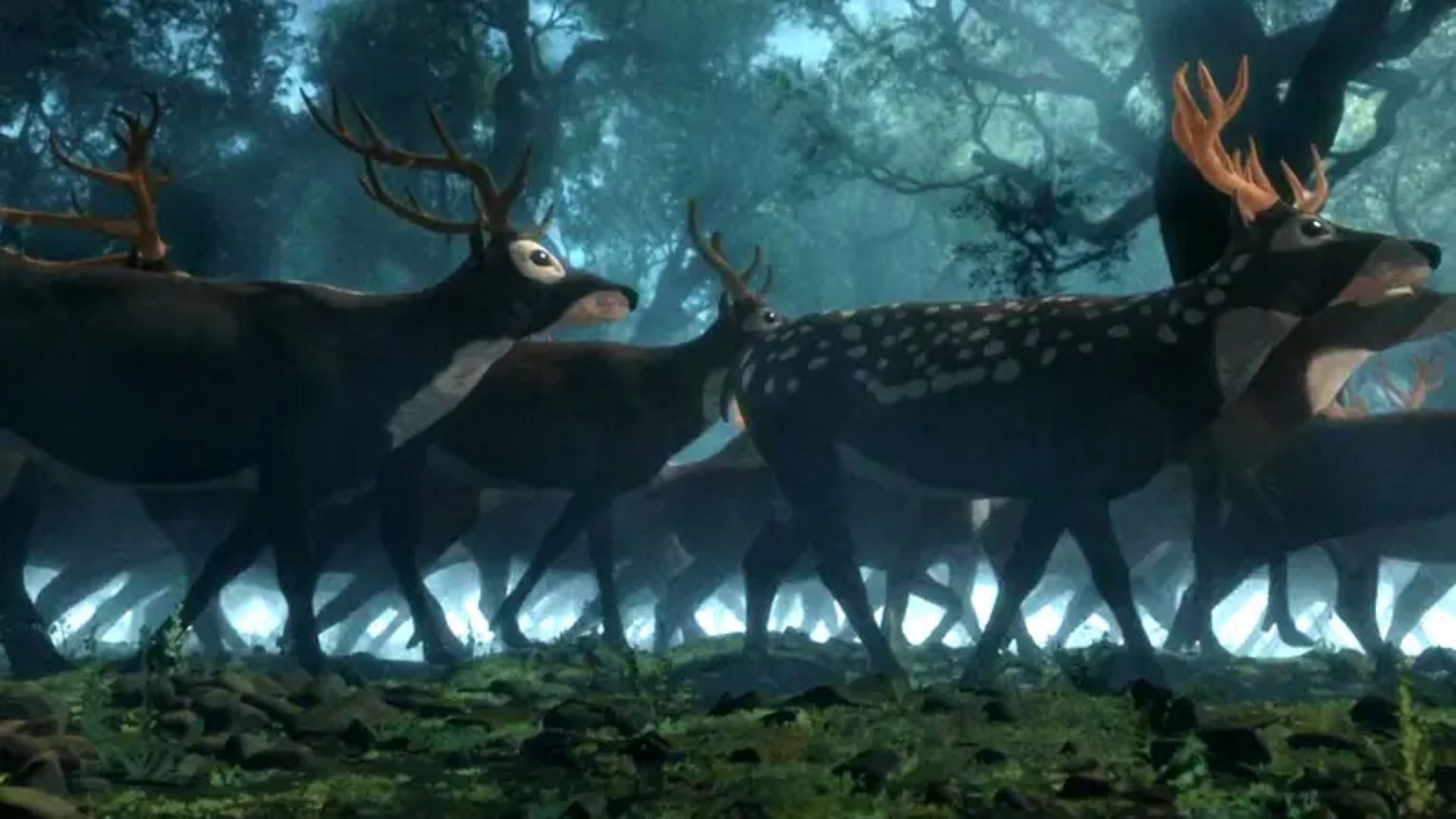
Deer feature prominently as both harbingers and symbolic beings. Their appearance signals the impending flood, and later, a deer stampede leads the cat to the whale.
Although not a direct part of the crew, the deer have an impact on the cat’s journey. The deer act as a reminder of the forces of nature that the animals must survive.
Fishes
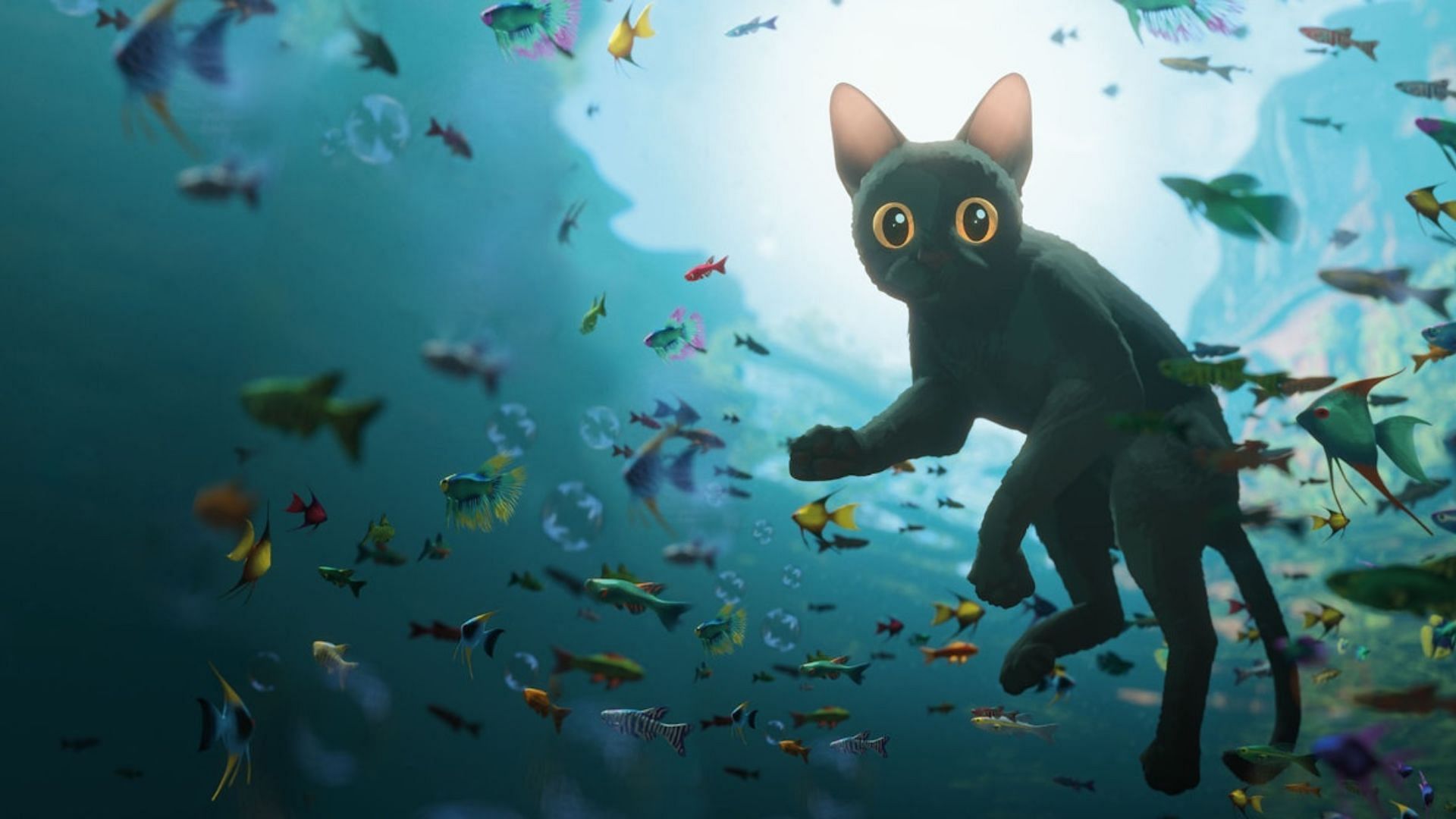
Fishes play an important supporting role in Flow. They are a source of sustenance for the cat and other animals aboard the boat. The cat's development depends critically on its interactions with the fish, which also helps it to learn how to survive in water and confront its anxiety. Among the most calm scenes in the movie, these moments highlight the fine equilibrium between survival and life.
Whale (Evolved and scarier version)
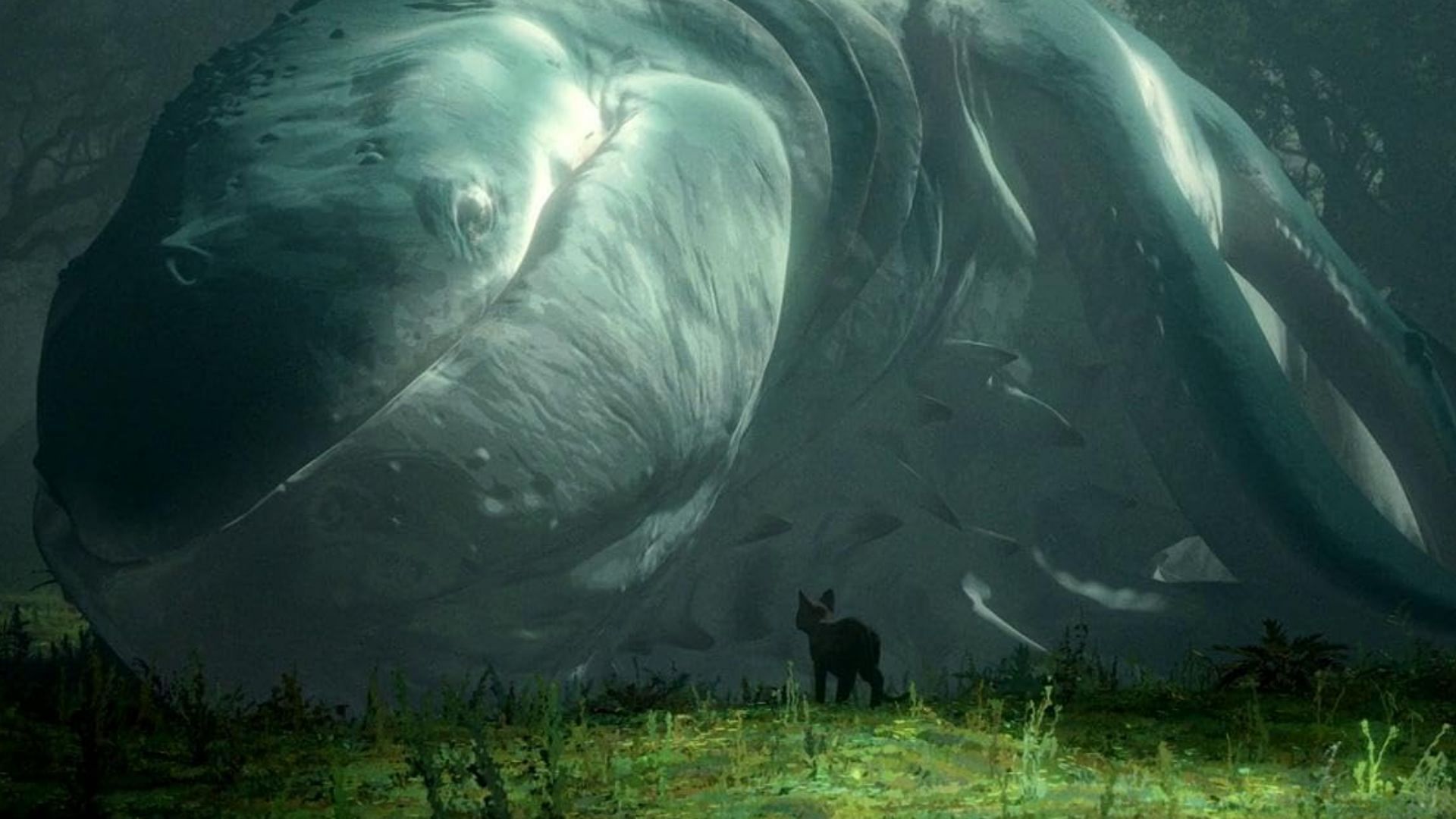
The whale in Flow is not just a giant sea creature but an evolved, more monstrous version of its real-world counterpart. With additional fins and tendrils, this whale becomes a symbol of both danger and mystery.
Initially intended to resemble a real whale, it was redesigned to appear scarier, emphasizing the film’s surreal elements. The whale’s role is crucial to the narrative, representing a significant challenge for the animals, as well as a deeper connection to the cat’s personal growth and ultimate transformation.
Everything to know about the movie Flow
Flow is a 2024 animated film directed by Gints Zilbalodis and written by Zilbalodis and Matīss Kaža. Set in a post-human world, it follows the journey of a cat and its unusual allies as they negotiate a fast-rising flood.
Apart from its animation, the movie is notable for its lack of dialogue, relying solely on the natural sounds and movements of its characters. This approach creates a more universal and visceral narrative experience that appeals across civilizations.
Production of Flow began in 2019 and took five and a half years to complete. The film is a collaborative effort between Latvia, France, and Belgium. It premiered at the Cannes Film Festival, where it received significant acclaim.
Since then, Flow has won several prestigious awards, including those at the Annie Awards and the Annecy International Animation Film Festival. It was also the first film from Latvia to be nominated for an Academy Award.
Stay tuned for more news and updates on Flow and similar projects as the year progresses.




